Refine by Region
Refine by Art Form
Refine by School Level
Artful Dodgers
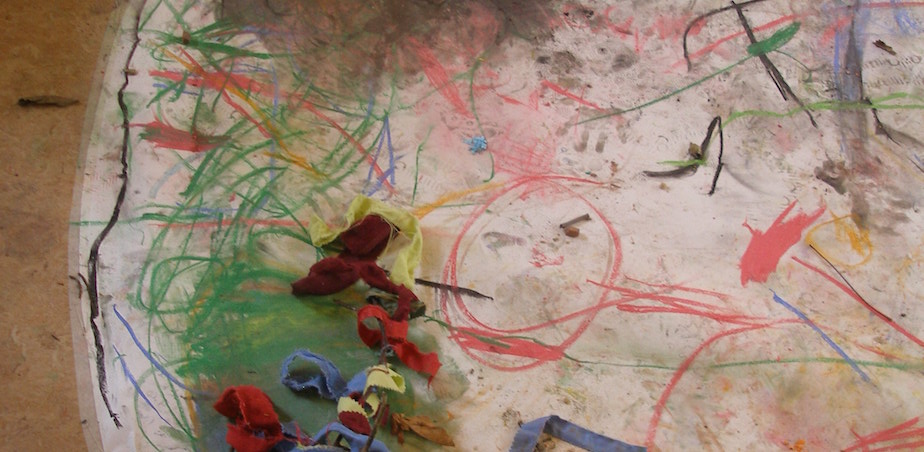
'Materials' (c) Fingal County Council Arts Office
Tell us the story of your project – What was it about? Who was involved? How did you begin? How did it develop?
Artful Dodgers is a unique early years arts education programme that commenced in September 2013 and continues to evolve today in two community crèche services in Fingal, north county Dublin. The programme is pioneered by Artist Jackie Maguire and Naomi Draper with Julie Clarke of Fingal County Council Arts Office, Fingal County Childcare Committee, Ros Eo and Little Learners Community Crèche and Prof. Carmel O’Sullivan and Prof. Noirin Hayes of the Arts Education Research Group, Trinity College Dublin (AERG).
The programme aims to provide an exploratory, creative and playful artistic space for children to develop and grow. To investigate the impact of this engagement on the children’s early development with particular focus on literacy and numeracy skills; and to build the capacity of the early years educators to embed music and visual arts in their settings. The project team adopted an artist is residence model for Phase 1 where both artists were located in the services on a weekly basis over a twelve week period. Each week they delivered a music and visual arts workshop in partnership with the staff of both settings. The artist in residence model was significant in that the artists were embedded within the settings allowing the artists, early years teachers and children to build relationships and to get to know each other over time. Over the period of the residency the artists worked closely with the children and early years teachers in both settings, where they explored the world of music and visual arts together.
The evaluation of Phase 1 (2013) indicated changes in pedagogical planning and style in the early years teachers over the twelve weeks period. Their language became more reflective and their practice incorporated a wider and richer range of materials; there was greater evidence of more child-led activities and unstructured play opportunities over the duration of the study. The data suggests that children’s social, cooperative and communication skills were enhanced. There was evidence over time of improved self-regulation, recall and recollection, and attention to activities. In addition, children’s curiosity and exploration was encouraged leading to enhanced vocabulary and greater persistence at activities. To assist the sustainability of the learning and practices developed during phase one the partnership provided the required resources to establish second phase. During this phase the teachers were encouraged to continue with the arts in their practice and the artists came to work with staff in both settings once a month. This kept the momentum of the project going without interruption. The focus of Phase 2 (2014-2015) was to develop ‘creative exchange’ between both the artists and early years teachers through a co-mentoring process. It was designed to consolidate arts practice within the early years settings, build a creative environment and strengthen relationships between the participants (artists and early years teachers) through reflecting on practice and children’s engagement.
A key element of phase two was the introduction of the ORID framework by the artists with the early years teachers to evaluate and reflect on the process. This framework facilitates focused conversation between participants in order to reach some point of agreement or clarify differences. ORID is as an evaluation framework developed at the Canadian Institute of Cultural Affairs. The framework gave everyone a voice and provided sound evidence to direct and inform future delivery.
A preliminary evaluation of Phase 2 suggests that changes occurred in early years practice, in terms of curriculum planning, relationships with children, staff and parents. Co-mentoring across different disciplines is very powerful particularly when it is experiential and all parties, in this case artists and early years teachers, are actively involved. The artists highlighted the value of the co-mentoring approach, which informed their planning for each setting visits. The early years teachers reported better understandings of children’s learning and sensitivity to the uniqueness of every child. They also reported a deepening understanding of Aistear, the early childhood curriculum framework and a greater appreciation of the importance of ‘tuning in’ and responding to the children’s behaviour. As the project evolved the partnership grew stronger and a third phase, the ‘parental involvement programme’, was created. This work is ongoing.
Ash Ryan of Little Learners Community Crèche, Mulhuddart
What aspects of the project made you smile? What aspects of the project made you feel challenged?
The Children, staff and parents’ engagement made me smile. I would glance around the room, which looked chaotic – paint everywhere, children’s faces and hands a multitude of colours, parents on the floor weaving, staff laughing with the children – and smile! However there were plenty of challenges. I had to rethink my teaching practice, both in terms of how much I controlled the outcomes of art projects with the children and my own feelings on ‘messy play’.
What insights from the project are worth sharing? Has anything changed as a result of the project?
Both the parents and staff have a different view on how the children engage with art materials, originally dirty clothes were a problem, but now parents expect the children to leave looking like they’ve been involved in activities during the day, and they always oblige with a change of clothes when necessary. My whole practice has changed. I have a far better understanding of creative play and its links to Aistear. Children have more of a say in the activities we provide and they have the freedom to choose materials and ideas for their own artwork. Parents have become more involved in the service as a result of their direct involvement. Children are generally having great fun while learning. We have stopped group activities where twenty children are making the same thing from a template. Templates are no longer used in the service. Artful Dodgers has managed to put an ethos in place that no college course for early years teachers has been able to achieve to date. The artists’ hands on engagement showed how a different approach works in practice; the staff could see the methods and begin to use them easily in a supported way.
Debbie Donnelly & Mary Farrell of Ros Eo Community Crèche, Rush
What aspects of the project made you smile? What aspects of the project made you feel challenged?
Seeing the enjoyment shining through the children throughout their involvement in the project made us all smile a lot. Jackie would break into song unexpectedly and both Jackie and Naomi’s personalities brought warmth and positivity into the classroom, which was a huge factor in the enjoyment and success of the project.
As safety officer I worried about the safety of the children while working away from the desks, on the floor, using materials they hadn’t used before, especially when we had a large group of children together. At the beginning I felt a little out of my comfort zone, as I was familiar with working a particular way. I also worried about fitting all the new arts activities in with the already full curriculum. I doubted my own ability to be a worthy capable participant in the project as I am not an artist.
What insights from the project are worth sharing? Has anything changed as a result of the project?
A new lease of life was injected into staff as we learned new ways to teach. We now use props to enhance language skills and the children’s understanding of a particular story or activity. We learned to share the workload better among staff. We now make time to reflect on activities afterwards. We discuss the positives and negatives and question how to improve or deliver something that didn’t work so well differently the next time. The weekly reflection is a very informative experience and positive way to finish the week. As a staff team we are more open to trying new things with the children. We know that what we are doing compliments the curriculum so we are more confident about delivering the curriculum. I’m definitely not afraid to move out of my comfort zone now.
I realise that I don’t have to be ‘talented’ at art or music to use it in the classroom. I’m willing to try new things and learn alongside the children. We don’t dwell if something doesn’t go to plan, we move on and try it again another day with something different. My advice is to keep trying and be adventurous. You’re never too old to learn.
Artist Naomi Draper
What aspects of the project made you smile? What aspects of the project made you feel challenged?
The welcome we received on every visit made me smile. Every week we arrived to an atmosphere of excitement and anticipation from the children, their parents and the staff. They were always waiting for us to arrive, they knew we were coming. During this residency I really felt part of the setting, a part of their week, a part of the team! I do think that this came from the strength of the relationship we developed with the staff who made us feel welcome, valued and supported in our work there. We also had time to establish these connections, time for reflection together and when we could see that we had developed something worth holding on to, the arts office gave us more time to develop these partnerships, supporting one another through a shared learning exchange, and broadening our partnerships to engage parents in a parental involvement phase. Our approach was probably a challenge initially, as we completely took over every corner of the crèche. But you could see confidence growing with every visit and as new materials were presented or alternative spaces were used, no instruction was required, the children, staff and parents too were willing to play, experiment, and see where it would bring them. Watching everyone’s confidence grow and observing how our practices changed and developed was very exciting.
What insights from the project are worth sharing? Has anything changed as a result of the project?
Jackie introduced us to the ORID reflective tool, which became an important tool to critically reflect and change. ORID also played a huge part in the development of our relationships with one another. It enabled us to openly and honestly speak about what happened and what we observed. It provided a supportive environment for me to learn and develop a better understanding of working in this context. Another aspect of my work that I am interested in exploring is the physical spaces we are part of. The initial residency period of the AD programme allowed me to test and examine the potential of the spaces in terms of children’s learning and development. Together with the staff we realised new possibilities for spaces that were not used in the crèche and found ways to activate and utilise them further.
Professor Nóirín Hayes, on behalf of the research team:
“As an academic with a long history of research in early childhood the potential value of arts education in early education, for both children and staff, has always been an interest of mine – particularly the challenging link between arts education and the role of play and process in early learning.
A key attraction of working with Artful Dodgers has been the collaborative approach, the creation of a learning community comprising children, parents, educators, artists and academics. The project, throughout, endeavoured to create a context that encouraged careful attention to planning through a mutual respect for the expertise of both the artists and the early years educators. Reflection informing future actions was a central dimension of the project at all stages. The success of this approach was evident in the engagement of all participants and the outcomes for children. Throughout the project careful records were maintained and shared by the artists and the early years educators. This material, alongside observation records and documentation of practice in process, provide a rich source of data to inform practice, policy and further research. Over and above this the project has brought parents and early educators close together in the shared education of young children. It is a privilege to have become part of the team and I look forward to furthering the dissemination of this important action research arts education project.”
Spotlight
Artist(s):
Naomi Draper
Naomi Draper (Visual Art) graduated from NCAD with a Bachelor of Design specialising in glass in 2007. Following an Erasmus programme at the Academy of Art, Architecture and Design, Prague, she received a scholarship to attend the Pilchuck Glass School, Seattle. In 2011, she completed a Postgraduate Diploma in Community Arts Education at NCAD. Naomi has participated on a number of residency programmes within a community and educational context, most recently completing the LOCIS Residency at Residence Botkyrka, Sweden.
“Through my work I am interested in the spaces we build around ourselves and how we respond to the environments that we are part of. I am interested in developing an understanding of the importance the environment and its structure has on a child’s development, learning and creativity examining the structures, boundaries, limitations and new potentials of the spaces we are part of. I approach projects with a focus on experimentation, play and process, allowing the participants choices and inviting them to be part of the decision making that might lead and direct our work together.”
Jackie Maguire
I am passionate about music and the positive impact that music has on children's lives. I am currently working in Newpark Music Centre with young children in the Gateway to Music programme and delivering Colourstrings music sessions to children aged 0-5 years in north county Dublin through Colourstrings Music with Jackie. When I'm not doing either of those two, I'm also working part time for Fingal County Childcare Committee as a Development Officer. I am heavily involved in Ireland's samba music scene and am a founding member of Morro 16 samba bloco and Canta Brasil. Through Morro 16, we have hosted workshops with internationally renowned percussionists and I regularly perform with Morro 16 and Canta Brasil in Ireland and have also performed in Europe and Brazil.
Teacher(s):
Ros EO Community Childcare Based in Rush community Centre Main Street Rush, County Dublin, a happy and friendly pre-school for children aged 3-5years.
Little Learners Crèche is a community based childcare service operating in the catchment area of Mulhuddart, Dublin 15. Our aim is to provide a good quality, child centred, affordable local childcare service which will enable parents to avail of employment, training and education opportunities.
The service is provided to people irrespective of their economic religious or ethnic background. We are funded by the Irish Government under the Community Childcare Subvention Scheme and part-financed by the European Union Structural Funds under the National Development Plan 2007-2013. We are managed by a voluntary Management Committee.
Our team consists of five full-time qualified and trained staff, including the Manager and Senior Childcare Worker. The team also currently includes two part time Community Employment Workers and one Special Needs Assistant. We cater for children aged between 1 and 5 years in our Wobblers, Toddler and Pre School rooms and can cater for up to 54 children in total. The service is open all year round and we offer full day and half day morning and afternoon sessions.
Other:
(Curator, agency, etc):
Fingal County Council Arts Office
We have established wonderful partnerships with so many accomplished artists and organisations, over recent years, which allow us to explore and experiment with project content and delivery methods. We have witnessed the wonderful results when people are supported to work in experimental ways. Early Years became a priority in 2012 when we launched our ‘Now We Are Ready To Start’ Programme. Since then our Early Years Programme has grown to include Artful Dodgers and Space Invaders arts festival. We want to provide more opportunities for young children and their guardians to come together and engage in quality artistic experiences. Continued Professional Development opportunities for primary school teachers became an important part of our education programme in 2008, and CPD opportunities for early years teachers is a vital element of Artful Dodgers 2013 and was built into the Space Invaders festival programme in 2014. We are eager to build on this area of support. A seminar hosted during Space Invaders 2015 provided an opportunity to share and discuss emerging early years arts practices with an audience of academics, teachers, curators, artists and policy makers. There are very positive offshoots from this discussion and we look forward to developing these conversations and building projects in partnership with others in the near future.
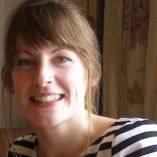
Artist(s)
Naomi Draper
Jackie Maguire
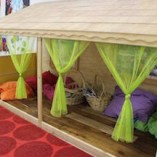
Teacher(s)
Debbie Donnelly
Mary Farrell
Ash Ryan
Artforms
School Level
School/
Participant Group
Ros Eo Community Childcare, Rush, Little Learners Community Crèche, Mulhuddart
No. Participants
100
Region
Age/Class
3-5 years
Dates
September 2013 - Ongoing
Weblinks
Leading Agency
Fingal County Council Arts Office
Key themes/ lines of enquiry
To provide an exploratory, creative and playful artistic space for children to develop and grow; To investigate the impact of this engagement on the children’s early development with particular focus on literacy and numeracy skills; and to build the capacity of the early years educators to embed music and visual arts in their settings.
Curriculum Strands
Links to both Aistear and Siolta curricula.
Research or relevant publications
The evaluation of phase one and phase two is complete and will be available in a forthcoming academic article. The evaluation of phase three is ongoing.
We have stopped group activities where twenty children are making the same thing from a template. Templates are no longer used in the service.
Ash Ryan, Little Learners Community Crèche, Mulhuddart
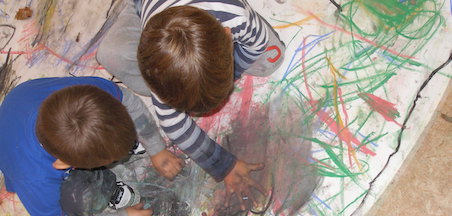
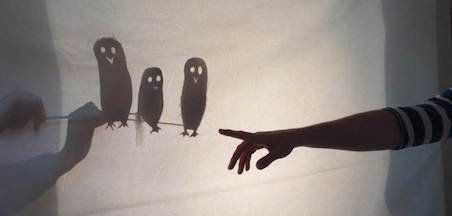
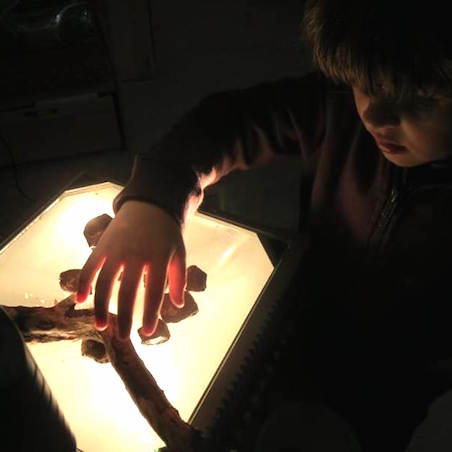
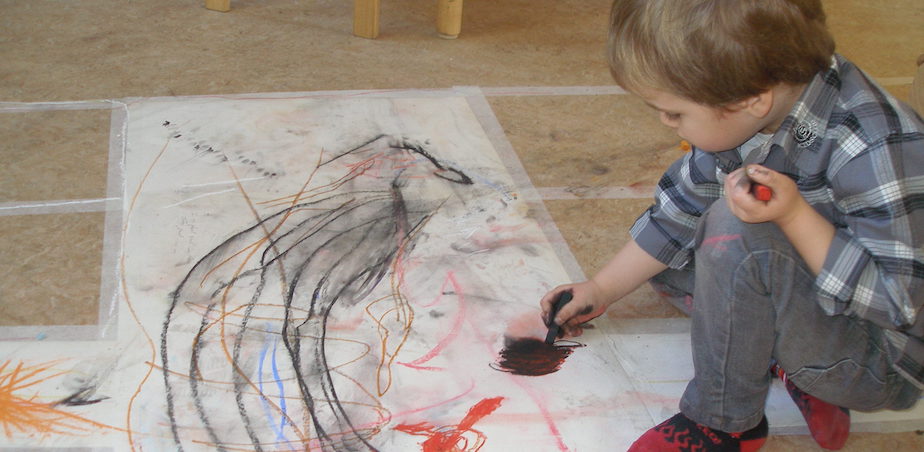
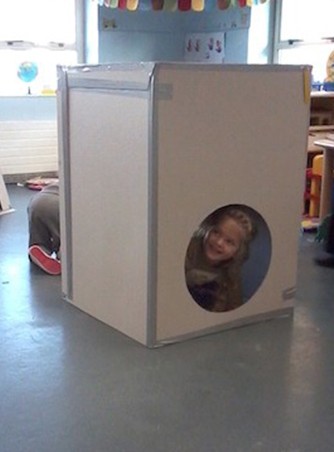
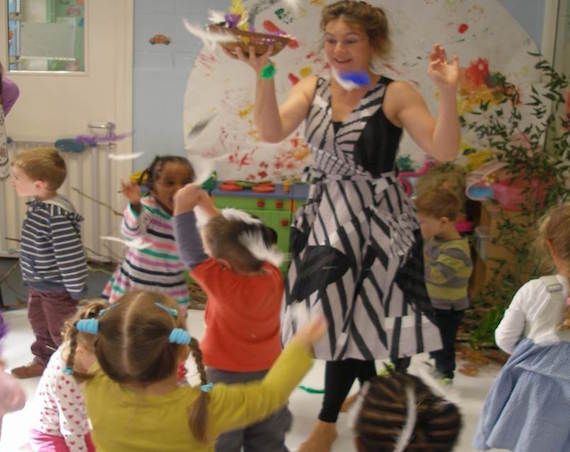
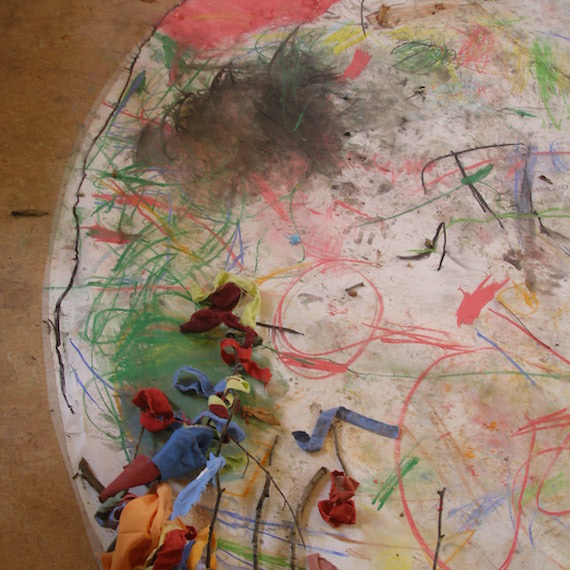
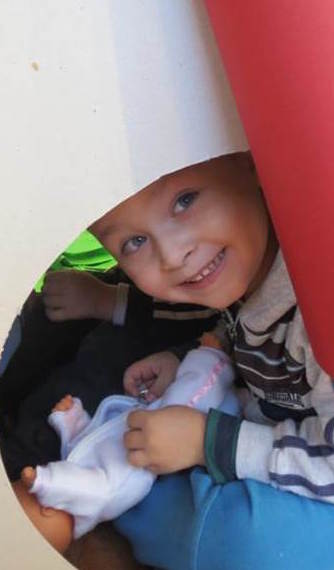
Similar Projects
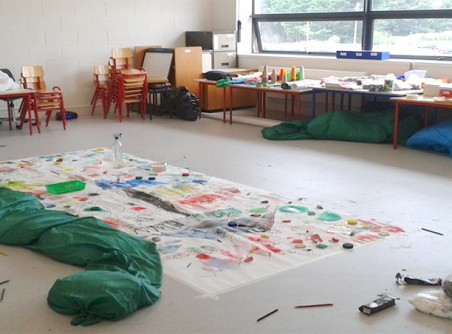
Room 13
Artists Órla Kelly and Anne Cradden work with Scoil Bhríde Cailíní and Tyrrelstown Education Together, supported by Fingal County Arts Office.

Learning About Learning
Artist Helen Barry works with Teacher Joanna McCallig and Junior Infant children from Dominican National School, Dun Laoghaire.